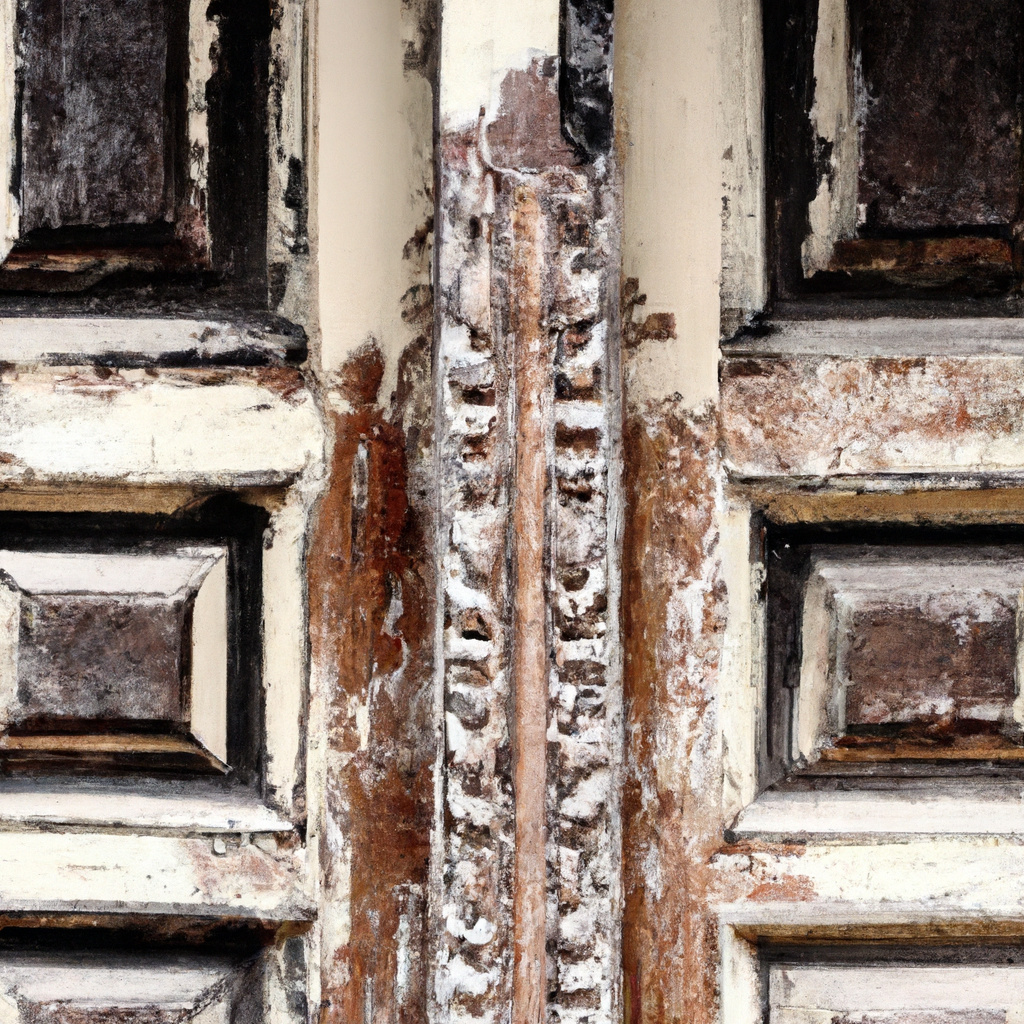Preserving the rich tapestry of architectural history is no small feat, but restoration techniques have become invaluable in the ongoing effort to protect and revive these magnificent structures. By focusing on the architectural and historical methods employed, a glimpse into the world of architectural restoration reveals the intricate processes that breathe new life into centuries-old buildings. Through a combination of meticulous research, skillful craftsmanship, and a deep respect for the original design, restoration techniques play a vital role in ensuring that architectural masterpieces continue to tell their stories for generations to come.

This image is property of images.unsplash.com.
Understanding Architectural Restoration
Architectural restoration refers to the process of returning a building or structure to its original condition, often due to damage or deterioration over time. It is a crucial practice to preserve and protect historical sites, as they provide valuable insights into our past and cultural heritage. By restoring these architectural gems, we ensure their continued existence for future generations to appreciate and learn from.
Historical sites are not only physical structures but also repositories of stories, traditions, and identities. Architectural restoration plays a key role in preserving the historical significance and cultural value of these sites. It allows us to maintain a connection with our past, fostering a sense of continuity and appreciation for our shared history.
To effectively restore a structure and preserve its historical integrity, it is essential to understand the principles of architectural restoration. This involves careful research, assessment, and the application of appropriate techniques to ensure authenticity and stability.
Assessing the Architectural Heritage
Assessing the value of architectural heritage can present significant challenges. Determining the historical, cultural, and artistic significance of a site requires a comprehensive understanding of its context. Historical context provides vital information about the site’s origins, purpose, and evolution, helping us appreciate its value within a broader historical narrative.
Cultural significance also plays a crucial role in the assessment of architectural heritage. The cultural meaning and emotional attachment that communities have towards a structure can affect its preservation and restoration. Recognizing and respecting the social value placed on a site is essential for ensuring the relevance and acceptance of restoration efforts.
Deterioration Factors in Historical Architecture
Historical architecture is susceptible to various deterioration factors. Environmental factors, such as weathering, exposure to pollutants, and natural disasters, can degrade a structure’s integrity over time. Human-induced factors, including inadequate maintenance, inappropriate interventions, and urbanization pressures, can also contribute to deterioration.
The effects of time and neglect further compound the deterioration of historical architecture. Without proper care and attention, structures can progressively deteriorate, leading to irreversible damage. Understanding these factors and their impact on historical sites is crucial in developing effective restoration strategies.
Pre-restoration Planning and Research
Thorough research and planning are vital steps in the pre-restoration phase. Researching the history of the site, including architectural drawings, historical records, and photographs, provides valuable insights into its original design and construction. This information serves as a foundation for accurate restoration, ensuring the preservation of architectural authenticity.
Architectural assessments, conducted by experts in the field, can also inform the pre-restoration planning process. These assessments evaluate the structural stability, material condition, and overall integrity of the building. By identifying any areas of concern or potential risks, restoration efforts can be tailored to address specific issues effectively.

This image is property of images.unsplash.com.
Conservation Techniques in Architectural Restoration
Conservation techniques encompass a range of methods employed to preserve historical architecture. These techniques aim to slow down or halt the processes of decay and deterioration, ensuring the longevity of the structure. Common conservation techniques include cleaning, stabilizing, consolidating, and protecting the materials of the building.
Conservation plays a vital role in architectural restoration by preserving the original fabric of a structure while integrating necessary repairs and interventions. The goal is to strike a balance between maintaining authenticity and ensuring the building’s stability and usability. Successful conservation projects demonstrate the effectiveness of these techniques in preserving architectural history.
Restoration Techniques in Structural Stabilization
Structural stabilization is a critical aspect of architectural restoration, especially when dealing with damaged or weakened structures. This process involves strengthening the building’s foundation, walls, and structural elements to ensure stability and safety. Techniques for structural restoration can include repairing cracks, reinforcing load-bearing elements, and replacing deteriorated materials.
Case studies of structural stabilization demonstrate the efficacy of these techniques in preserving historical architecture. By addressing structural concerns, restoration efforts can safeguard the building’s longevity and allow for continued use or adaptability based on contemporary needs.

This image is property of images.unsplash.com.
Restoration of Architectural Elements and Details
Restoring architectural elements and details presents unique challenges due to the intricacies of design and craftsmanship involved. Ornamental details, decorative elements, and intricate carvings may suffer from decay, damage, or loss over time. Restorers must carefully analyze the original design intent and employ appropriate techniques to replace or repair these elements faithfully.
Techniques used in restoring architectural elements range from reversible interventions that maintain the original fabric to accurate reproductions of lost or damaged features. Through meticulous craftsmanship and attention to detail, successful restoration projects are able to revive the beauty and historical significance of architectural elements.
Using Modern Technology in Architectural Restoration
Modern technology has revolutionized the field of architectural restoration, offering new tools and techniques to aid in the preservation process. Three-dimensional (3D) printing, for example, allows for the accurate reproduction of intricate architectural features. This technology enables restorers to create replicas of ornate moldings, statues, and other details, ensuring historical accuracy and minimal visual discrepancy.
Other technologies, such as laser scanning and digital modeling, help in the documentation and analysis of historical sites. These tools provide precise measurements, facilitate accurate condition assessments, and aid in the design and evaluation of restoration interventions. Case studies showcasing the successful incorporation of modern technology in restoration provide insight into the possibilities and benefits these advancements offer.

Post-Restoration Preservation and Maintenance
Once a structure has been restored, ongoing preservation and maintenance become imperative. Regular monitoring, maintenance, and periodic inspections ensure that the restored architecture continues to withstand the test of time. Preventive measures, such as routine cleaning, maintenance of drainage systems, and regular checks on structural integrity, are crucial in preserving the restored building’s longevity.
Preserving restored architecture also involves educating and engaging the local community and visitors about its historical and cultural significance. By raising awareness and fostering a sense of pride and ownership, communities become more invested in the ongoing preservation efforts.
Case Study: Architectural Restoration in Egypt
Egypt holds a significant place in architectural and historical restoration efforts. The country is home to world-renowned landmarks, such as the Pyramids of Giza, the Temple of Luxor, and the Valley of the Kings. Restoring these ancient wonders not only preserves Egypt’s heritage but also contributes to global cultural understanding and appreciation.
Architectural restoration in Egypt has had a profound impact on both the tourism industry and the local communities. By restoring and preserving these iconic structures, Egypt attracts visitors from around the world, fueling economic growth and cultural exchange. The successful restoration of historical sites in Egypt highlights the country’s commitment to preserving its architectural and cultural legacy.
In conclusion, architectural restoration plays a crucial role in preserving our historical sites and cultural heritage. By understanding and employing the principles and techniques of restoration, we can ensure the continued existence and relevance of these architectural gems. Despite the challenges posed by deterioration factors and the complexities of restoration, the use of modern technology and thoughtful planning can help us safeguard our past for future generations to appreciate. Egypt’s restoration efforts serve as a testament to the importance and impact of architectural restoration in preserving our shared history.


